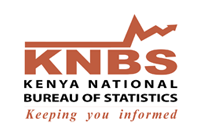Real Quarterly Gross Domestic Product (QGDP) is estimated to have slowed down to 5.0 per cent in the second quarter of 2017 compared to 6.3 per cent in the corresponding quarter of 2016. The quarter in review was characterized by sharp increases in food prices as a result of adverse weather conditions and a notable rise in international oil prices. This led to a surge in inflationary pressures with the average inflation rate increasing more than two-fold from 5.36 per cent in the second quarter of 2016 to 10.80 per cent in the review quarter. The current account deficit widened to KSh 134.8 billion in the quarter under review from a deficit of KSh 114.1 billion in the corresponding quarter of 2016 on account of significant increase in the value of imports.
The slowed but robust growth was supported by activities of Transport and Storage, Real Estate, Information and Communication Technology, Accommodation and Food services and a slightly improved growth in Wholesale and Retail Trade. On the other hand, the growth was somewhat constrained by subdued performances in Agriculture Forestry and Fishing (1.4 per cent), Manufacturing (2.3 per cent), Electricity (6.1 per cent) and Financial intermediation (4.3 per cent) thereby dampened the overall growth momentum during the quarter in review.
Performance of the agriculture sector was exacerbated by widespread drought experienced during the fourth quarter of 2016 and somewhat suppressed long rains in 2017 that considerably affected crop production and rearing of animals. This led to a notable slowdown in the manufacture of food as agro-processing was negatively affected by constrained supply of food products. Electricity generation was also greatly affected by reduced rains thereby necessitating increased use of thermal sources whose intermediate inputs are more expensive compared to other sources. Growth in Financial Intermediation was also dampened by the effect of continued slow uptake of credit.
During the quarter, the Kenyan Shilling marginally depreciated against the US dollar but appreciated slightly against the sterling pound. Performance of the Shilling against the Euro and the Japanese Yen remained largely unchanged during the quarter. In the regional front, the Shilling depreciated against the South African Rand and Tanzanian Shilling but appreciated slightly against the Ugandan Shilling. Commercial bank lending rates dropped from an average of 18.15 per cent in the second quarter of 2016 to 13.63 per cent in the quarter under review.
